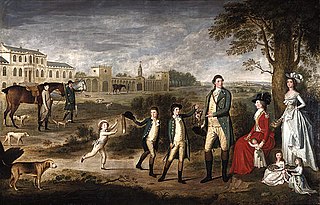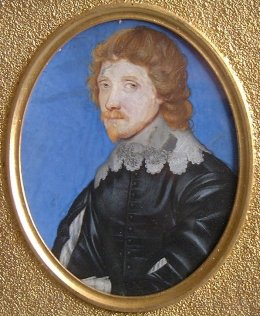
Earl of Wemyss is a title in the Peerage of Scotland created in 1633. The Scottish Wemyss family had possessed the lands of Wemyss in Fife since the 12th century. Since 1823 the earldom has been held with the Earldom of March, created in 1697. The holder of the title is sometimes known as the Earl of Wemyss and March, but the titles are distinct.
This is a list of people who served as Lord Lieutenant of County Donegal.
This is a list of people who have served as Lord Lieutenant for the East Riding of Yorkshire. The office was established after the English Restoration in 1660, when a Lord Lieutenant was appointed for each Riding of Yorkshire. Since 1721, all Lord Lieutenants have also been Custos Rotulorum of the East Riding of Yorkshire, and for part of the period also Lieutenants of the Town and County of the Town of Kingston upon Hull. It was abolished on 31 March 1974 with the creation of the county of Humberside, but was re-created upon the abolition of Humberside on 1 April 1996.
General James Alexander St Clair-Erskine, 3rd Earl of Rosslyn PC, DL, styled Lord Loughborough from 1805 to 1837, was a Scottish soldier and Tory politician. A General in the British Army, he also held political office as Master of the Buckhounds between 1841 and 1846 and again in 1852 and as Under-Secretary of State for War in 1859.
There have been three baronetcies created for members of the Anstruther family, two in the Baronetage of Nova Scotia and one in the Baronetage of Great Britain. Two of the creations are extant while one is extinct.

Sir John Anstruther, 1st Baronet was a Scottish politician who sat in the Parliament of Scotland from 1702 to 1707, and in the British House of Commons from 1708 to 1741.
The title of Lord Pittenweem is a Scottish title of nobility. It was created by James VI as a barony in 1609 for Frederick Stewart, son of William Stewart, Commendator of Pittenweem. Fredrick Stewart assigned the title and lands of the Lordship and Barony to Thomas Erskine, Viscount Fenton, later 1st Earl of Kellie, in 1614. Between 1631 and 1672 the Lordship and Barony was held by the Crown. It was held "in place of the late lords" so that when the Barony and Lordship later passed to the 3rd Earl of Kellie it was not as a new creation but by an assignation of the Lordship and Barony.

There have been five baronetcies of the United Kingdom created for a person with the surname Erskine, two in the Baronetage of Nova Scotia, one in the Baronetage of Great Britain and two in the Baronetage of the United Kingdom. Two of the creations are extant as of 2010.

Clan Wemyss is a Lowland Scottish clan.
William Hay, 17th Earl of Erroll, known as Lord Hay until 1778, was a Scottish peer.

John Leslie, 6th Earl of Rothes was a Scottish nobleman, one of the main leaders of the Covenanters.
General Sir Alexander Duff was a British Army officer of the Napoleonic era.
The Squadrone Volante or New Party was a political grouping in Scotland which emerged around 1700 as an offshoot of the opposition Country Party. Led by John Ker, 5th Earl of Roxburghe and John Hay, 2nd Marquess of Tweeddale, the party was influential in passing the Act of Union with England in 1707.

Balcarres House lies 1km north of the village of Colinsburgh, in the East Neuk of Fife, in eastern Scotland. It is centred on a mansion built in 1595 by John Lindsay (1552–1598), second son of David, 9th Earl of Crawford. The house became the family seat of the Earl of Crawford. The present house is the result of substantial extensions in the early nineteenth century, using part of a fortune made in India, but preserves much of the original mansion.
James Wemyss was a Scottish naval officer and politician who sat in the House of Commons from 1763 to 1784.
James Hay Erskine Wemyss was a Scottish Member of Parliament, representing Fife from 1859 until his death.

County Buildings is a municipal structure in St Catherine Street in Cupar, Fife, Scotland. The building, which was the meeting place of Fife County Council, is a Category B listed building.
Robert Lindsay, 9th Lord Lindsay PC, was a Scottish landowner.






